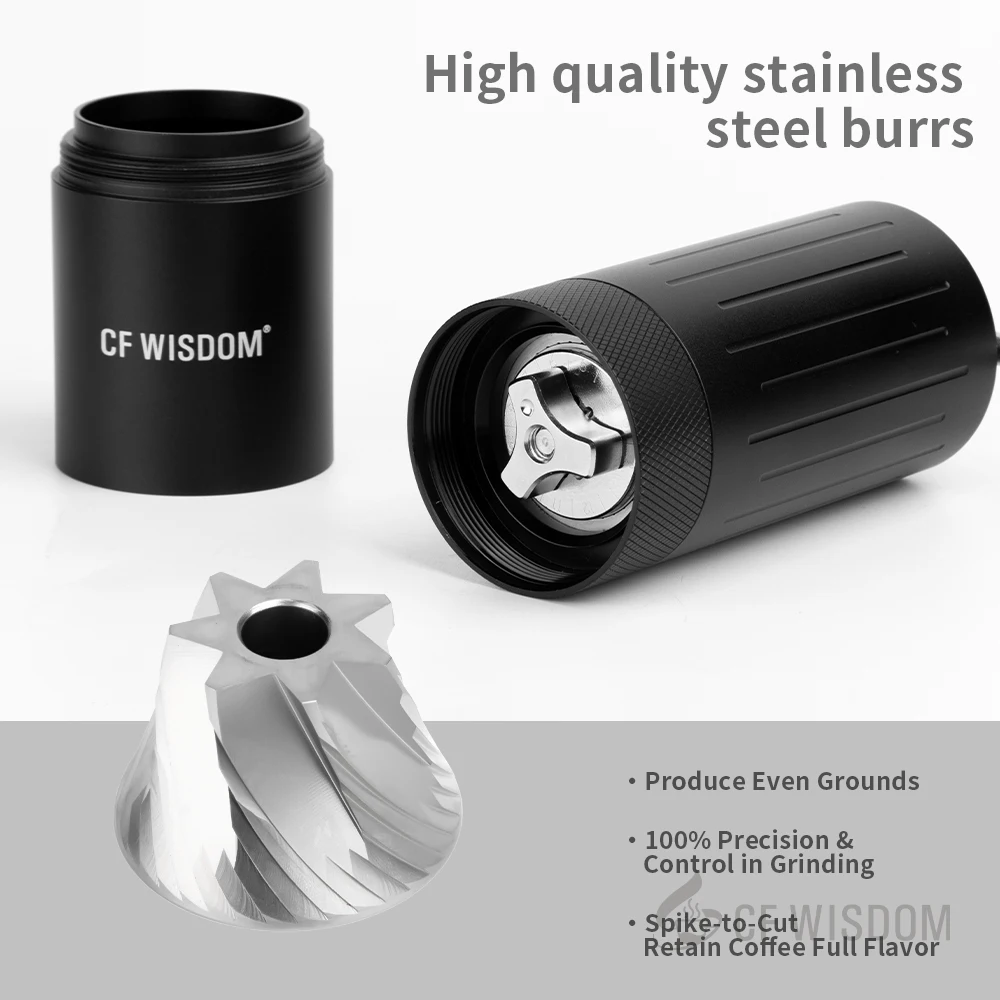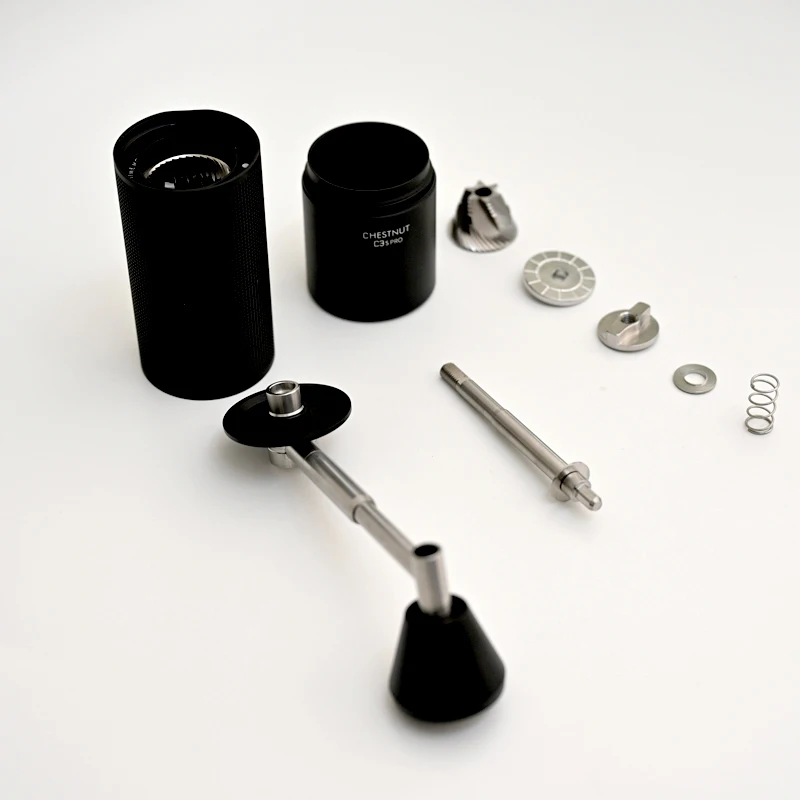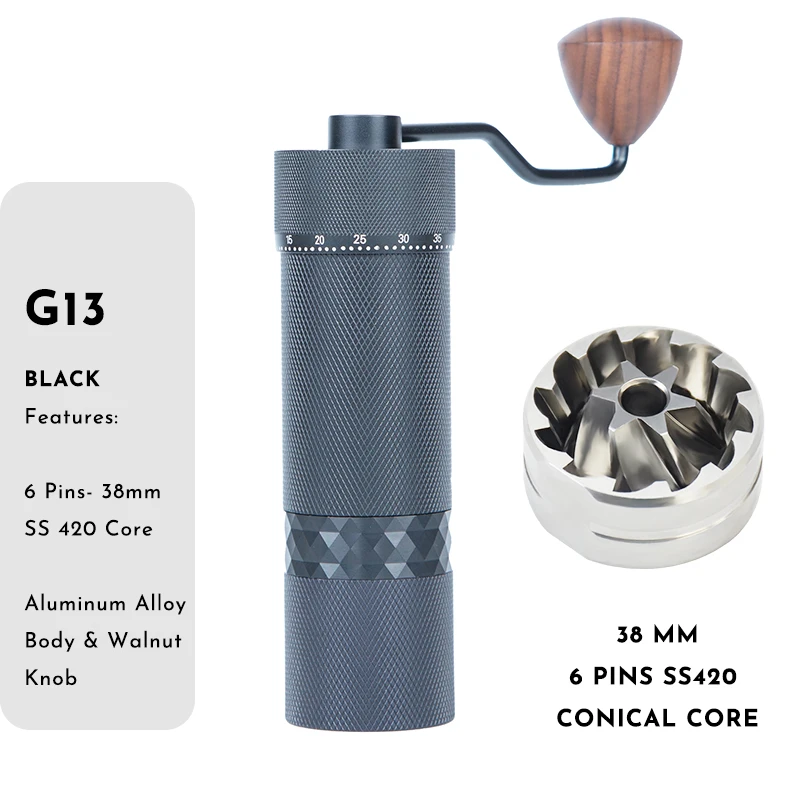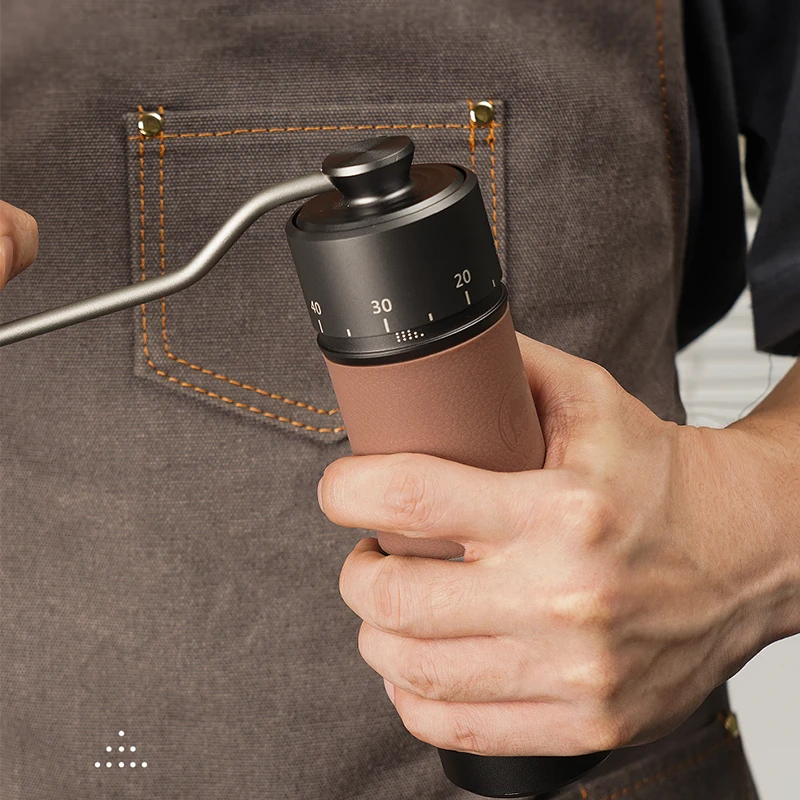Why Heat is the Enemy of Great Coffee Flavor
Coffee lovers know that the perfect cup depends on many factors, but one often overlooked element is heat during the grinding process. Heat is a silent flavor-killer that can transform your premium beans into a disappointing brew before you even start brewing.
When coffee beans experience excessive heat during grinding, it triggers a chain of unfortunate events. The delicate volatile compounds that give coffee its complex aroma and flavor begin to evaporate prematurely. These compounds—including fruity esters, floral aldehydes, and sweet-smelling ketones—are extremely heat-sensitive and begin breaking down at temperatures as low as 86°F (30°C).
The impact on your cup is immediately noticeable:
- Increased bitterness and harsh, burnt notes
- Diminished sweetness and acidity
- Flattened flavor profile lacking complexity
- Reduced aromatic intensity
- Shorter flavor longevity in the cup
Heat doesn’t just affect flavor directly. It also creates static electricity within the grinder, causing ground particles to cling together and stick to surfaces. This leads to inconsistent particle size, uneven extraction, and ultimately, an unbalanced brew. Understanding the precision grind settings for espresso becomes irrelevant if heat is ruining your grounds before brewing even begins.
Scientific research demonstrates that for every 10°F increase in temperature during grinding, there’s a measurable decrease in certain key flavor compounds. The delicate chemistry that influences how burr heat affects coffee grounds is crucial for coffee enthusiasts to understand if they want to preserve the full potential of their beans.
Understanding Heat Generation in Manual Coffee Grinders
Heat doesn’t appear magically during grinding—it’s the direct result of physical processes occurring as you turn that handle. The primary source is friction, created when coffee beans are caught and crushed between the burrs of your grinder.
As beans enter the grinding chamber, they encounter resistance from the burrs. This resistance translates to friction as the cutting surfaces shear through the bean structure. The harder you work to turn the handle, the more energy is being converted to heat through this friction. Coffee grinding typically raises the temperature of the grounds by 10-30°F (5-16°C) depending on the grinder design and technique.
Grind size settings substantially influence heat generation. Finer settings position the burrs closer together, creating more resistance and friction. An espresso grind can generate nearly twice the heat of a coarse French press setting in the same grinder. This is why correct grind settings for espresso must consider heat factors along with particle size.
The design of the grinder itself plays a crucial role in how much heat builds up and how quickly it transfers to your coffee. Materials with higher friction coefficients generate more heat, while those with high thermal conductivity spread heat more quickly throughout the system—sometimes carrying it away from the beans, but sometimes concentrating it right where your coffee is being ground.
The physics of grinding creates an unavoidable challenge: the energy you put into turning the handle must go somewhere, and much of it converts to heat. Understanding this transformation is the first step toward minimizing its impact on your precious beans.
The Natural Advantage of Hand Grinders for Temperature Control
Manual coffee grinders have an inherent advantage over electric models when it comes to heat management. This isn’t just coffee folklore—it’s based on fundamental differences in how these devices operate.
Electric grinders typically operate at high speeds—often 500-1,000 RPM or more—creating substantial friction and heat in seconds. In contrast, hand grinders usually operate at just 60-80 RPM during normal use. This dramatic difference in speed translates directly to less friction and lower heat generation. Temperature measurements show that electric grinders can raise coffee particle temperatures by 30-50°F (17-28°C), while quality hand grinders typically increase temperatures by only 10-20°F (5-11°C).
The absence of a motor provides another significant thermal advantage. Electric motors generate their own heat during operation, which transfers to the grinding mechanism and ultimately to your coffee. Hand grinders eliminate this additional heat source entirely.
The manual grinding motion itself contributes to better heat management. The natural pauses between turns and the varying speed of hand grinding allow more time for heat to dissipate rather than accumulate. This intermittent action creates a more temperature-stable grinding environment than the constant high-speed operation of electric models.
Many quality manual coffee burr grinders are designed with materials and structures that facilitate heat dissipation. From the handle to the body to the burrs themselves, each component can be optimized for thermal management without compromising on durability or function.
When considering the relationship between grinding technique and heat, it’s worth exploring how espresso grind settings for the perfect shot must account for the heat advantage of manual grinding. This natural temperature control contributes significantly to preserving the delicate flavor compounds that make exceptional espresso possible.
Critical Features for Minimizing Heat in Hand Grinders
Not all hand grinders are created equal when it comes to managing heat. Specific design elements can dramatically influence how much heat builds up during grinding and how effectively it’s dissipated away from your coffee.
The concept of thermal conductivity is central to understanding heat management in grinders. Materials with high thermal conductivity quickly transfer heat away from the point of friction (where beans meet burrs), while low conductivity materials insulate and slow this transfer. A well-designed grinder balances these properties strategically throughout its construction.
Several key elements work together as a system to minimize heat impact:
- Burr material composition and surface treatment
- Burr design, geometry, and cutting efficiency
- Overall construction materials and thermal mass
- Bearing quality and alignment precision
These features must be balanced with other performance considerations like durability, consistency, and ergonomics. A grinder that excels at heat management but produces inconsistent particle sizes would ultimately defeat its own purpose.
For those seeking optimal temperature control, all-metal hand grinders often offer better heat dissipation properties than plastic alternatives, though the specific design matters more than broad material categories. The following sections explore these critical features in greater detail.
Burr Material: Choosing Between Ceramic and Steel
The material of your grinder’s burrs significantly influences heat generation and transfer during grinding. This choice represents one of the most important thermal management decisions in grinder design.
Ceramic burrs have become popular partly due to their excellent thermal properties. With a thermal conductivity roughly 100 times lower than steel, ceramic burrs resist transferring heat to coffee particles. They maintain a more stable temperature during grinding, helping preserve volatile compounds in the coffee. However, ceramic is more brittle than steel and may chip if foreign objects like small stones find their way into your beans.
Stainless steel burrs, conversely, heat up more quickly due to higher thermal conductivity but also dissipate that heat faster through the grinder body. Modern steel burrs often feature specialized coatings or treatments that can reduce friction and improve heat management. Titanium nitride (TiN) coated burrs, for example, offer lower friction coefficients while maintaining sharpness longer than untreated steel.

Each material offers distinct advantages for different brewing methods:
| Burr Material | Heat Generation | Heat Transfer | Ideal For | Considerations |
|---|---|---|---|---|
| Ceramic | Lower | Very Low | Light roasts, pour-over | More brittle, eventually dulls |
| Stainless Steel | Moderate | Higher | Dark roasts, espresso | Durable, stays sharp longer |
| Coated Steel | Lower | Moderate | Versatile across methods | Premium option, best overall performance |
Many ceramic burr coffee grinders excel at preserving the bright, nuanced flavors of lighter roasts, while quality steel burrs can be advantageous for darker roasts where some heat-accelerated oil release may actually complement the flavor profile.
Burr Design and Geometry Effects on Heat Generation
The shape, angle, and precision of grinding burrs dramatically influence both grinding efficiency and heat generation. The right design can minimize friction while still cutting beans effectively.
Conical burrs have a significant advantage over flat burrs when it comes to heat management. Their geometry requires less force to grind the same amount of coffee, resulting in reduced friction and heat. Coffee flows through conical burrs more naturally, with gravity assisting movement rather than requiring additional force to push beans through the grinding path.
Cutting angles matter substantially as well. Premium burrs typically feature cutting edges between 35-45 degrees, optimized to slice beans cleanly rather than crushing them. Sharper, more precise edges reduce the energy required for grinding, directly translating to less heat generation. Dull burrs create more friction and heat while producing less consistent results.
The alignment precision of burrs is perhaps even more crucial than their basic design. Misaligned burrs create uneven friction points and hot spots, leading to inconsistent grinding and localized heat build-up. Grinders with superior alignment systems maintain optimal positioning throughout use, ensuring even heat distribution and consistent particle size.
Burr size also influences heat dynamics. Larger burrs provide more surface area for both cutting and heat dissipation. A 38mm burr set will typically generate less heat than a 30mm set grinding the same beans, as the larger surface distributes the work across more cutting edges. Understanding the impact of heat retention in metal coffee grinders reveals how these design elements interact with grinder materials.
Grinder Construction and Heat Dissipation Properties
Beyond the burrs themselves, the overall construction of a hand grinder significantly affects its thermal performance. The body materials, mass, and structural design all contribute to how effectively heat is managed during use.
Body material selection creates a thermal pathway that can either trap heat near the beans or channel it away. Aluminum bodies conduct heat rapidly away from the grinding chamber, while stainless steel offers excellent stability with moderate conductivity. Plastic components, common in budget grinders, insulate rather than dissipate heat, potentially keeping warmth concentrated around your coffee.
The physical mass of a grinder serves as a heat sink during operation. Heavier, more substantial grinders can absorb and distribute more heat before any noticeable temperature increase affects the beans. This thermal inertia explains why compact travel grinders often heat up faster than larger counterparts with identical burr sets.
Ventilation and airflow considerations are often overlooked in grinder design. Better-engineered models incorporate subtle pathways for air circulation, allowing natural cooling to occur during use. This passive cooling helps maintain stable temperatures even during extended grinding sessions.
Quality bearings significantly reduce friction beyond just the burr-to-bean contact. Precision ceramic or steel bearings minimize energy loss and heat generation at the axle, improving both grinding efficiency and thermal management. Poor-quality bearings force you to exert more energy turning the handle—energy that converts directly to unwanted heat.
Many stainless steel manual coffee grinders combine these construction elements effectively, using the material’s properties to help manage heat while providing durability and stability during use.
Practical Techniques for Cooler Grinding
Even the best-designed grinder benefits from proper technique. These practical approaches can help you minimize heat generation regardless of your equipment:
Maintain a moderate, consistent pace: Aim for about 1-2 turns per second rather than rapid cranking. This steady rhythm allows heat to dissipate between rotations rather than building up continuously.
Use smooth, fluid motions: Jerky, forceful turns create more friction and heat than smooth, even pressure. Let the burrs do the cutting work rather than forcing beans through with extra pressure.
Feed beans gradually: Overloading the grinding chamber creates unnecessary resistance. Add beans in smaller amounts to maintain consistent grinding pressure and reduce friction.
Take brief pauses during longer grinds: When preparing coffee for multiple cups, consider short breaks every 30 seconds to allow components to cool slightly.
Keep your grinder clean: Residual coffee oils and particles increase friction between moving parts. Regular cleaning maintains optimal performance and reduces unnecessary heat generation.

The perfect grinding technique should feel effortless rather than laborious. If you’re struggling to turn the handle, you’re likely generating excess heat through increased friction. When comparing manual vs. automatic espresso grinder settings, these technique considerations become even more important for hand grinding fine espresso particles.
You’ll know you’ve mastered proper technique when grinding feels smooth and consistent without requiring excessive force. The grounds should flow steadily from the grinder without clumping—excessive clumping often indicates static build-up from heat friction.
Regular maintenance significantly impacts heat performance. Clean your grinder every 1-2 weeks for daily users, focusing especially on removing coffee oils that increase friction. Check burr alignment periodically, as even slight misalignments force you to use more energy (creating more heat) to achieve the same results.
Beyond the Grinder: Comprehensive Flavor Preservation
While managing heat in your grinder is crucial, it represents just one aspect of a holistic approach to coffee flavor preservation. Several complementary practices can enhance your efforts to minimize heat impact.
Grinding coffee immediately before brewing is perhaps the single most important practice for maximizing flavor. Once ground, coffee begins losing volatile compounds within minutes. Even perfectly temperature-controlled grinding can’t overcome the flavor loss from pre-ground beans stored for hours or days. This immediate grinding principle becomes particularly important when aiming for the ultimate espresso grind size precision.
Proper bean storage creates the foundation for successful low-heat grinding. Store your beans in an airtight container away from heat, light, moisture, and strong odors. Coffee stored at room temperature maintains optimal grinding consistency, while beans straight from the refrigerator can develop condensation that affects both grinding performance and flavor extraction.
The debate around cooling beans before grinding continues among coffee professionals. While slightly cooled beans (65-70°F/18-21°C) can produce more uniform particle sizes, refrigeration risks introducing moisture that damages flavor. If exploring cold grinding, allow beans to reach room temperature in an airtight container before opening to prevent condensation.
Fine Adjustment Hand Grinder, Precision Manual Grinder, Travel Coffee Grinder
Price range: $185.11 through $494.63 Select options This product has multiple variants. The options may be chosen on the product pageHand Burr Grinder, Hand Crank Coffee Grinder, Manual Espresso Grinder, Portable Coffee Grinder
Price range: $262.72 through $300.22 Select options This product has multiple variants. The options may be chosen on the product pageManual Burr Mill, Manual Coffee Grinder Stainless Steel, Manual Coffee Mill Grinder, Mechanical Coffee Grinder
Price range: $127.26 through $130.32 Select options This product has multiple variants. The options may be chosen on the product pageHand Burr Grinder, Manual Coffee Grinder Stainless Steel, Precision Manual Grinder
Price range: $183.64 through $187.52 Select options This product has multiple variants. The options may be chosen on the product page
Water quality, brewing temperature, and extraction time work alongside proper grinding to maximize flavor potential. Even perfectly ground, heat-protected coffee will disappoint if brewed with poor-quality water or improper techniques. Consider these elements as an interconnected system rather than isolated factors.
Remember that coffee preparation is ultimately about balancing variables to match your taste preferences. The effort invested in heat management during grinding pays dividends in cup quality, especially when combined with attention to these complementary factors.
Realistic Assessment: How Significant is Heat in Hand Grinding?
While understanding heat transfer is important, it’s equally valuable to maintain perspective on its relative impact. How much should the average coffee enthusiast worry about heat during manual grinding?
For most home brewers using hand grinders, heat concerns are much less significant than they would be with high-speed electric grinders. Manual grinders typically generate temperature increases of just 10-15°F (5-8°C)—generally below the threshold where major flavor degradation occurs. By comparison, some electric grinders can raise coffee temperatures by 30-50°F (17-28°C), well into the problematic range.
The significance of heat management increases substantially for certain brewing methods and coffee varieties:
- Espresso brewing magnifies any flavor flaws due to its concentrated nature
- Light-roasted, high-altitude beans contain more heat-sensitive compounds
- Single-origin specialty coffees often feature delicate flavor notes easily masked by heat effects
- Longer grinding sessions (for multiple cups) accumulate more heat than quick single-dose grinds

For casual brewers using medium or dark roasts for methods like French press or pour-over, basic heat management techniques are likely sufficient. However, those pursuing exceptional espresso or working with premium light-roasted beans may benefit significantly from more advanced heat prevention approaches.
Many precision manual grinders already incorporate effective heat management features that make additional techniques less crucial. The quality of your equipment partially determines how much attention you need to give to heat management techniques.
FAQ: Common Questions About Heat and Hand Grinding
How can I tell if my grinder is generating too much heat?
Touch the grounds immediately after grinding—they should feel only slightly warm, never hot. If you can hold the grounds comfortably, heat levels are likely acceptable. Excessive clumping, static cling, or a noticeably “roasty” aroma from the grounds can also indicate problematic heat buildup.
Do ceramic burrs make a noticeable difference in the cup?
For most brewers, the difference is subtle but present. Blind taste tests show that ceramic burrs can produce brighter, more complex cups from light roasts compared to steel burrs at the same setting. However, grinder design and quality influence results more than burr material alone.
Does grinding speed really matter with hand grinders?
Yes, but moderately. Very fast grinding (3+ turns per second) generates noticeably more heat than a relaxed pace (1-2 turns per second). However, extremely slow grinding provides minimal additional benefit. Find a comfortable, moderate rhythm rather than racing through the process.
Should I cool my beans or grinder before use?
Cooling the grinder itself offers minimal benefit as it warms up quickly during use. For beans, slight cooling (to around 65-70°F/18-21°C) may improve grinding consistency, but refrigeration risks moisture damage. Room temperature beans in a proper storage container are generally ideal.
How often should I clean my grinder to prevent heat buildup?
For daily users, a thorough cleaning every 1-2 weeks prevents oil buildup that increases friction and heat. Heavy users or those grinding oily dark roasts should clean weekly. Always check for foreign objects like small stones that can increase friction dramatically.
Expert Tips: Advanced Heat Management for Specialty Coffee
For coffee enthusiasts pursuing the absolute pinnacle of flavor preservation, these advanced techniques can further minimize heat impact:
Pulse grinding: Break longer grinds into 15-20 second intervals with 10-second pauses to allow heat dissipation.
Pre-cooling technique: Store your hand grinder (disassembled) in a cool location overnight before early morning grinding sessions.
Bean staging: For larger batches, divide beans into smaller portions and grind them sequentially rather than all at once.
Altitude adaptation: At higher elevations where water boils at lower temperatures, heat management becomes more critical—use slower grinding techniques.
Roast-specific approach: Adjust your grinding pace based on roast level—lighter roasts benefit more from slower, more heat-conscious grinding than darker roasts.
Some professionals even modify their premium grinders with heat-dissipating features like external cooling fins or specialized burr coatings. While these modifications may seem extreme, they reflect the significant impact proper heat management can have on coffee quality.
Light-roasted Ethiopian and Kenyan beans particularly benefit from advanced heat management due to their delicate floral and fruit notes. These coffees contain higher concentrations of heat-sensitive compounds that contribute to their distinctive character.
Understanding burr alignment features becomes especially important for heat-conscious grinding, as proper alignment reduces friction that generates unwanted temperature increases.
By applying these expert techniques alongside the fundamentals of proper grinding, you’ll extract the absolute maximum flavor potential from every bean—turning a good coffee experience into a truly exceptional one.







